Along with silvery cheeks, a white forehead, and a black chinstrap, this bird has a fiery tuft just above his beak.
Meet The Fire-tufted Barbet

“Fire-tufted Barbet – Psilopogon pyrolophus” (cropped) by billbacon1968 is licensed under CC BY 2.0.
The fire-tufted barbet (Psilopogon pyrolophus) is a species of bird in the Asian barbet family Megalaimidae. A moderately large bird (28 cm), the adult birds are overall green in appearance and have a brownish-maroon nape, grey lores, white band on the forehead, throat green, followed by a bright yellow band before a black band, appearing like a necklace separates the belly. The bill is fawn-colored with a black vertical band. Tufts of feathers at the base of the beak. Upper tufts are fiery orange in males
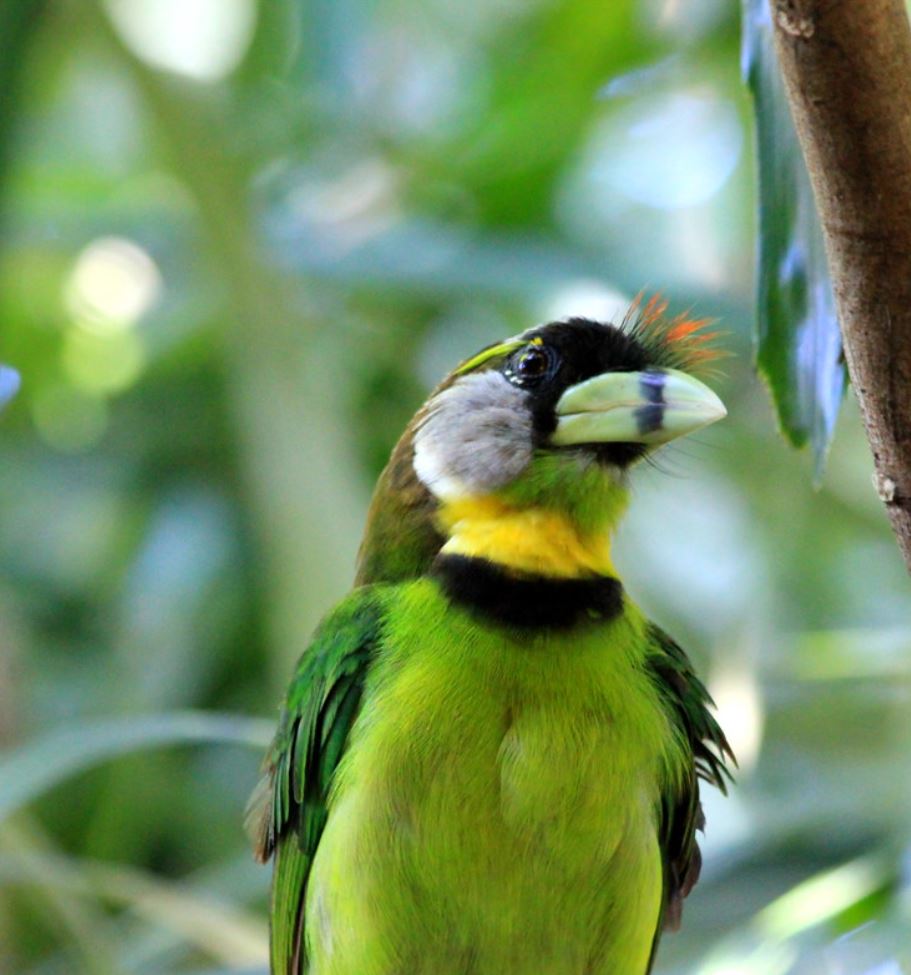
“FIRE TUFTED BARBET” by cuatrok77 is licensed under CC BY-SA 2.0.
Sexes look alike, except that females lack the crimson on the crown, which is replaced with a sooty coloration.
Young birds tend to look duller.
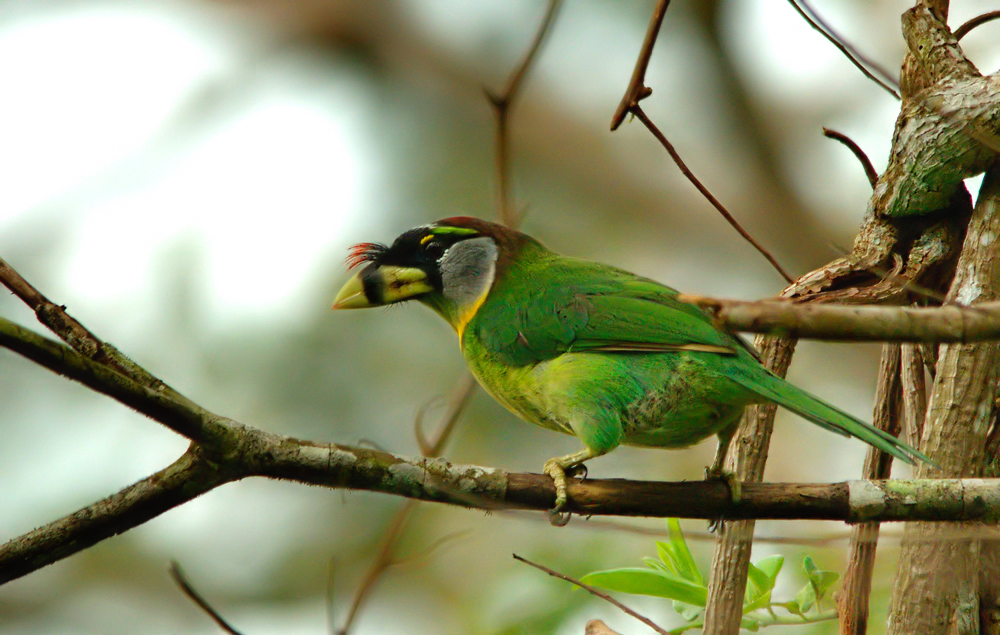
“File:Fire tufted barbet.jpg” by Seshadri.K.S is licensed under CC BY-SA 4.0.
These birds are native to Peninsular Malaysia and Sumatra.
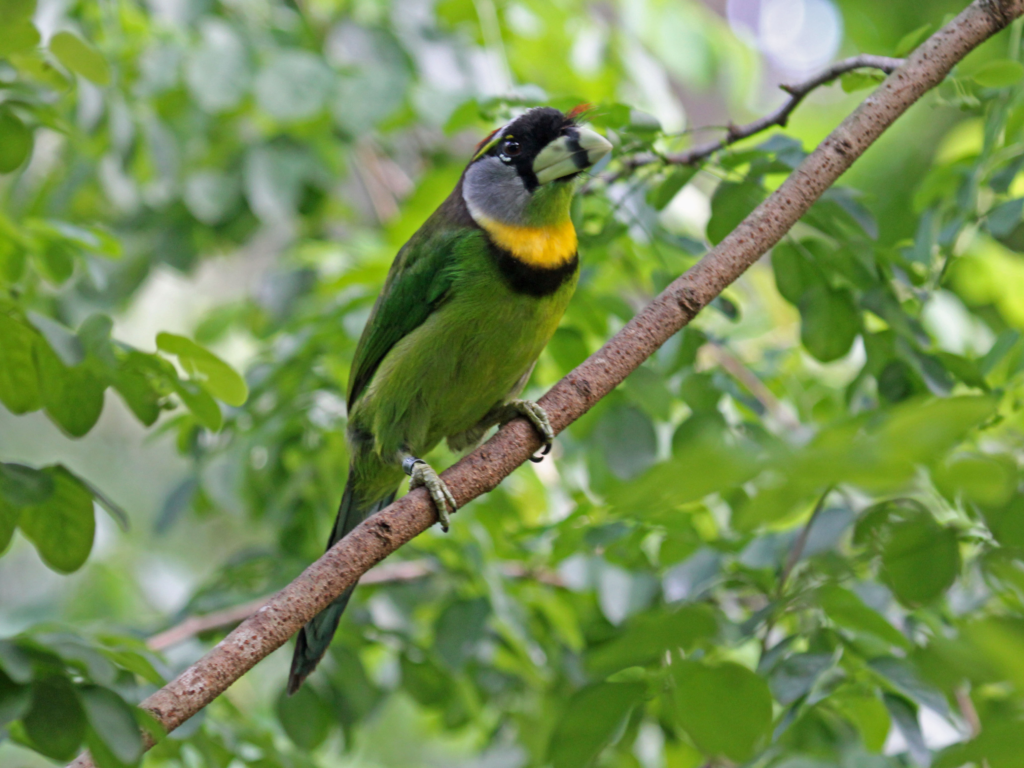
“File:Fire-tufted Barbet RWD4.jpg” by DickDaniels (http://carolinabirds.org/) is licensed under CC BY-SA 3.0.
These birds are commonly seen alone or in pairs or small family groups high up in the canopy and mid-level. They prefer dense foliage inhabiting tropical moist lowlands and montane forests.

“File:Psilopogon pyrolophus 0zz.jpg” by Photo by David J. Stang is licensed under CC BY-SA 4.0.
Fire-tufted barbet primarily feeds on fruits, particularly figs, but will also eat some insects.
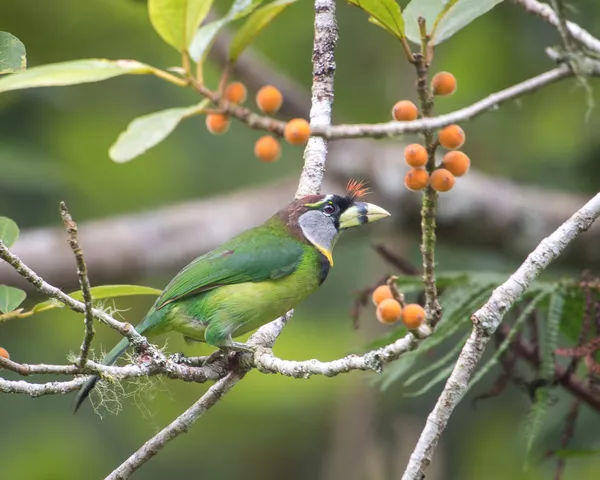
“File:Fire-tufted Barbet, Fraser’s Hill, Pahang, Malaysia 1.jpg” by Jason Thompson from Bangkok, Thailand is licensed under CC BY 2.0.
They typically breed from February to April. Both parents excavate the nest in a dead tree or limb. The average clutch generally consists of 2 to 4 eggs, which are incubated for 13 to 15 days. The chicks are raised by both parents and fledge when they are about 40 days old. They continue to be fed by their parents for another week or so.

“File:Psilopogon pyrolophus 2zz.jpg” by Photo by David J. Stang is licensed under CC BY-SA 4.0.
This species has been listed as Least Concern on the IUCN Red List since 2004. Its scientific name was proposed by Salomon Müller in 1836, who described a barbet from Sumatra.
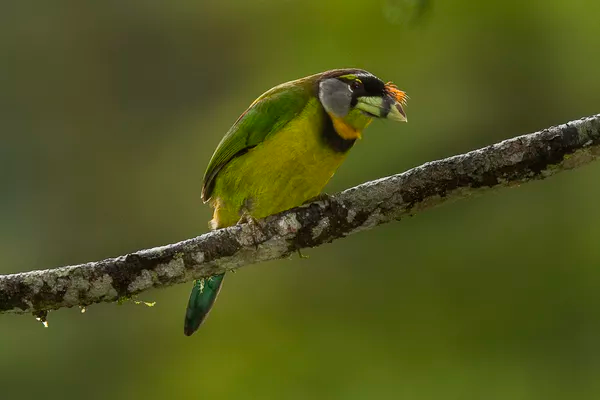
“File:Fire-tufted Barbet – Malaysia MG 6223 (16382668896).jpg” by Francesco Veronesi from Italy is licensed under CC BY-SA 2.0.
You can watch these birds right here in the video below:




